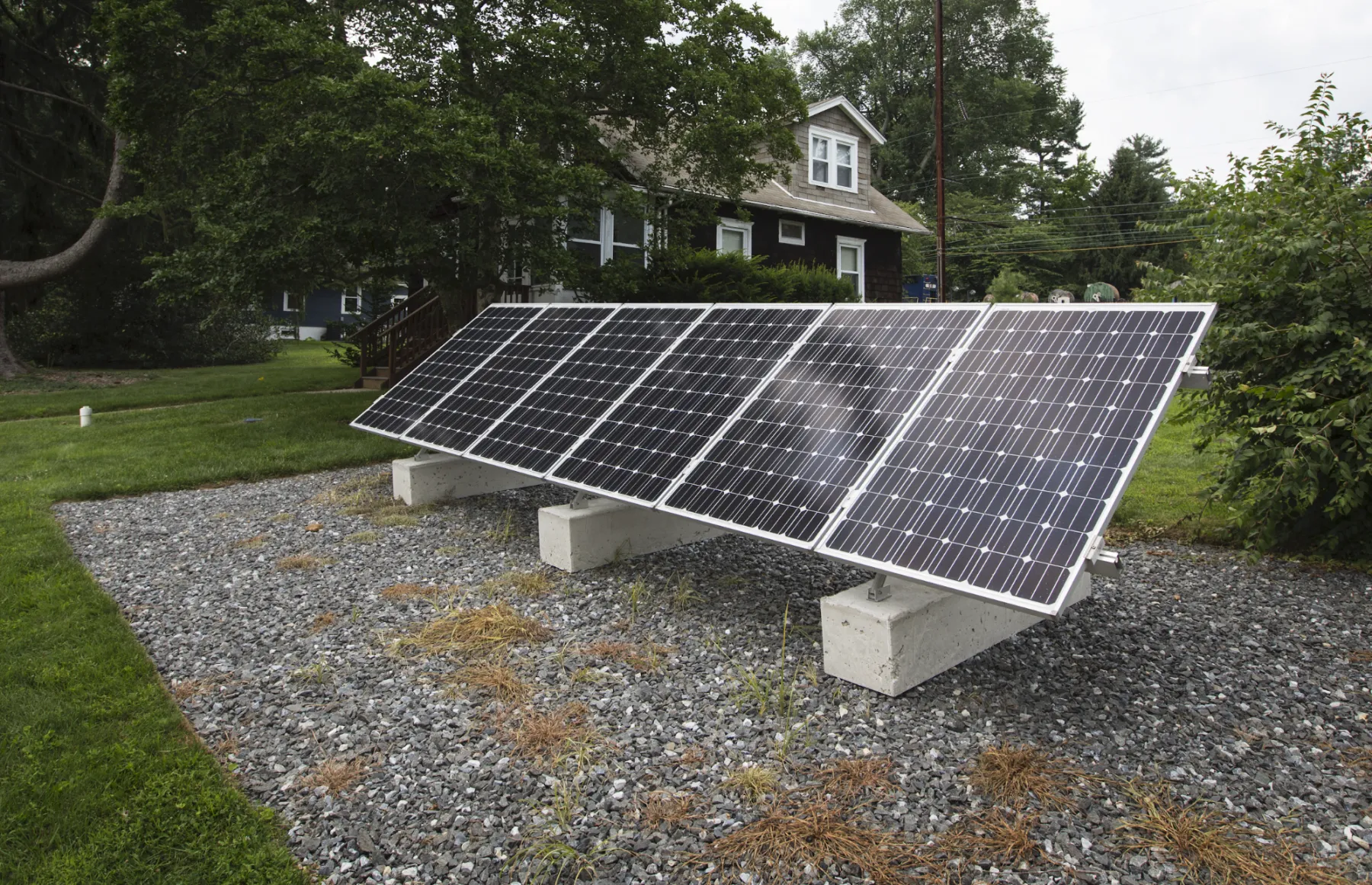- Swarthmore's Electricity Systems
The Philadelphia Electric Company (PECO) serves as Swarthmore’s gas and electric utility. PECO is part of the Pennsylvania-Jersey-Maryland (PJM) regional transmission system, for which you can access real-time electricity information. A handful of buildings at the College have solar photovoltaic systems, which slightly reduces the electricity Swarthmore consumes from the grid.
Electricity is delivered to campus through a single transformer, and limitations in the maximum wattage that the current infrastructure can supply may constrain future growth in demand. That constraint will require the College to control and offset peak demand and work with PECO to increase campus capacity.
The campus has experienced infrequent, prolonged power outages, for which it was necessary to rent large diesel generators to power the campus. As such, resilience is a key focus area when planning for the campus’s energy future.
In order to reduce the campus carbon footprint from purchased electricity, the College has purchased Renewable Energy Credits (RECs) in the form of wind power since 1999. The College has gradually increased that commitment so that 100% of the College's purchased electricity is covered by Green-E certified RECs.
- Swarthmore's Heating & Cooling Systems
Currently, Swarthmore’s central heat plant burns natural gas, with #2 fuel oil as backup, to generate steam that heats air and water for most of the campus. Most buildings not connected to the steam loop have small natural gas boilers, while Whittier Hall and the PPR Apartments receive heating and cooling from ground-source heat pumps, with some supplemental hot water from solar thermal panels on the PPR Apartments. Air-source heat pumps support the Danawell Connector the Mullan Tennis Center. A new hot water loop heats the Maxine Frank Singer '52 Hall, and will be gradually expanded as one component of To Zero By Thirty-Five.
Analogous to the central steam loop, most campus buildings connect to a centralized chilled water loop, powered by one natural gas and two electric chillers. Similar to the decentralized basement boilers, peripheral buildings use local air conditioning units. Air and ground source heat pumps provide both heating and cooling for connected buildings.
Other points of interest:
- The College's Building Management System allows Facilities staff to centrally monitor and control heating and lighting for most buildings. This ensures that buildings and rooms are only heated or cooled to comfort temperature when they are in use.
- During regular hours, winter temperatures in buildings are set to 68 degrees and summer temperatures are set to 76 degrees.
- In winter months, temperatures are set back on nights and weekends and at midday in residence halls. Building temperatures are set back during holiday breaks and domestic hot water is turned off. Learn more about heating systems in residence halls here.
- To Zero By Thirty-Five Energy Plan
Visit the To Zero By Thirty-Five website to learn more.
In August 2018, Swarthmore convened a working group, including representatives from Facilities, Sustainability, ITS, and Finance, to develop the Roadmap to Zero Carbon (now known as To Zero By Thirty-Five), building off of previous energy and infrastructure studies. The Integral Group provided engineering support and systems analysis, and GreenerU provided project management, communications, and planning support. An Advisory Board of external sustainability professionals and stakeholders lent their expertise to the process as well.
The approach proposed in the final report involves heating buildings using low temperature hot water, generated by efficient electric heat pump and heat recovery chiller technology combined with a geo-exchange field as a thermal source/sink. Buildings too far from the district energy system will be fully electrified and use air-source heat pumps as current gas systems are retired. The electric needs of campus will be served by both installing onsite solar photovoltaic panels and procuring offsite renewable electricity.
Once the new central plant and geoexchange field are constructed, 100% of the campus cooling needs and 75% of campus heating needs will be supplied without onsite combustion of fossil fuels, and after completion of building system upgrades, 100% of both cooling and heating needs will be met without onsite combustion. This conversion of heating and cooling, combined with renewable electricity procurement, will cut the Scope 1 and 2 greenhouse gas emissions of Swarthmore’s campus by 98%.
To keep campus power online when the grid experiences outages, backup electricity sources will be required from an on-campus generator, batteries, or other electricity storage technologies. Storage will also help avoid the campus demanding more electricity at a time than the grid infrastructure can handle.
To Zero By Thirty-Five was approved by the Board of Managers in February 2021. Implementation of the plan is now underway, which will span the next 13 years.
Questions
Reach out to us with any questions, comments, or feedback at sustainability@swarthmore.edu.




